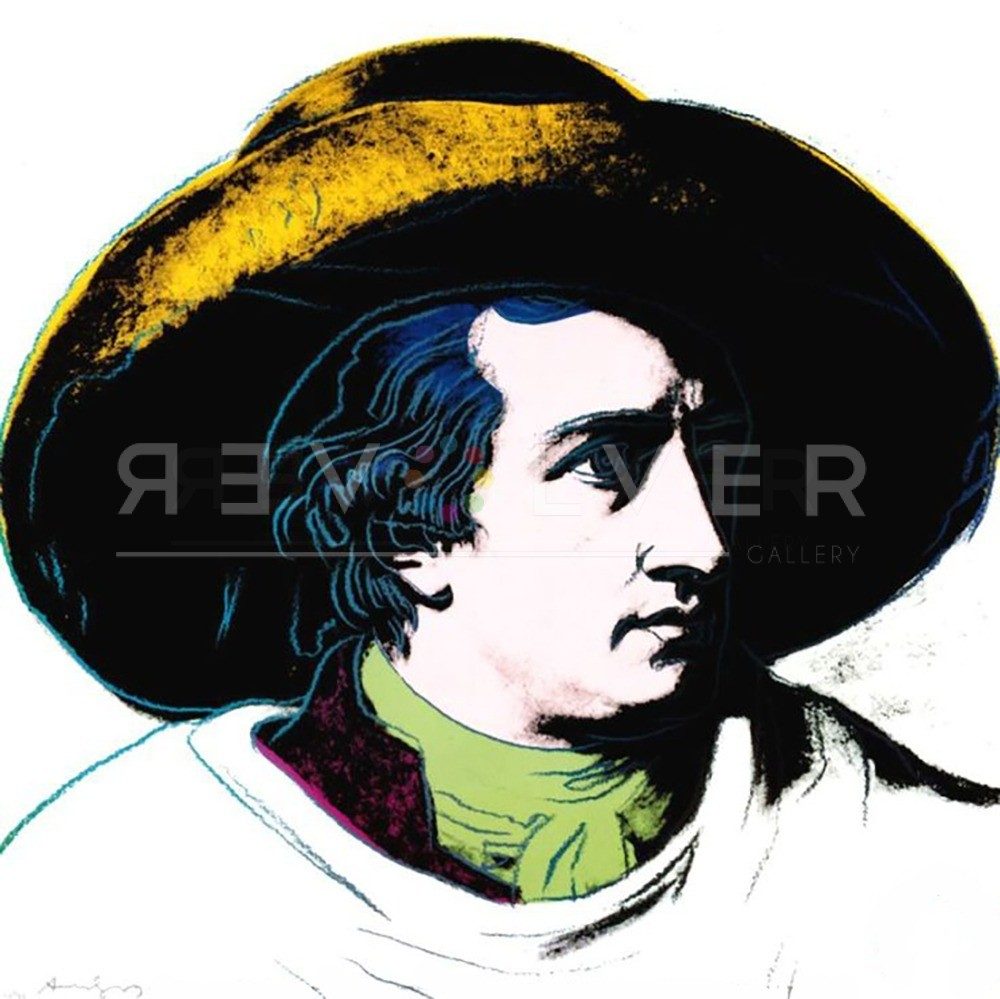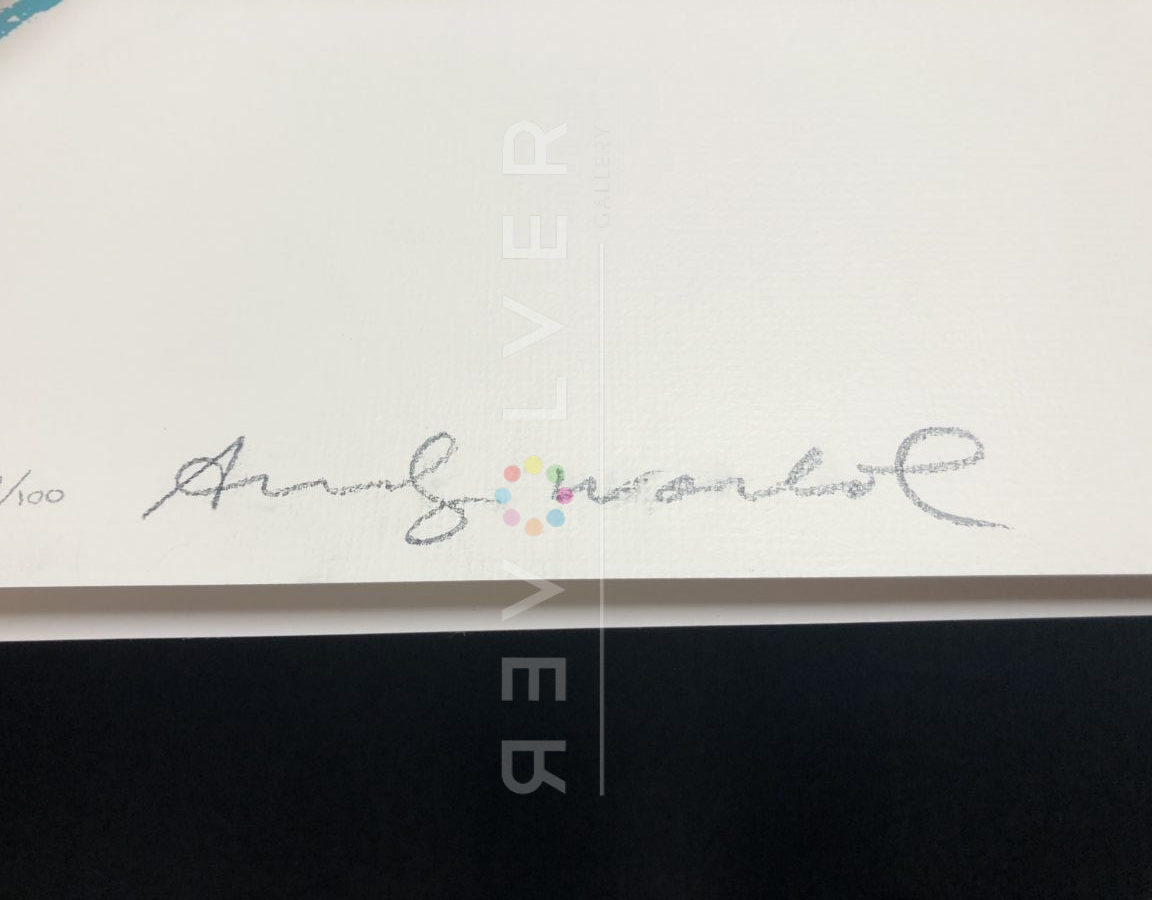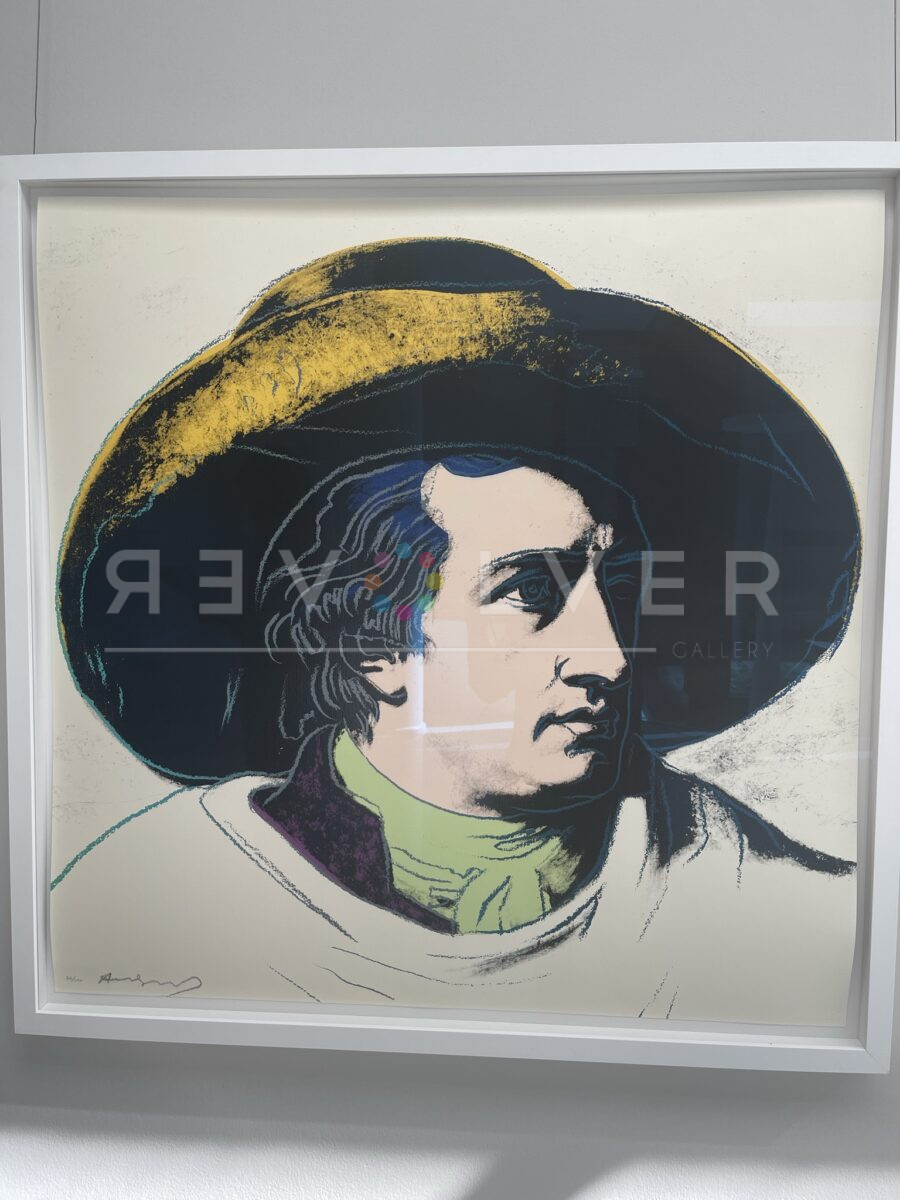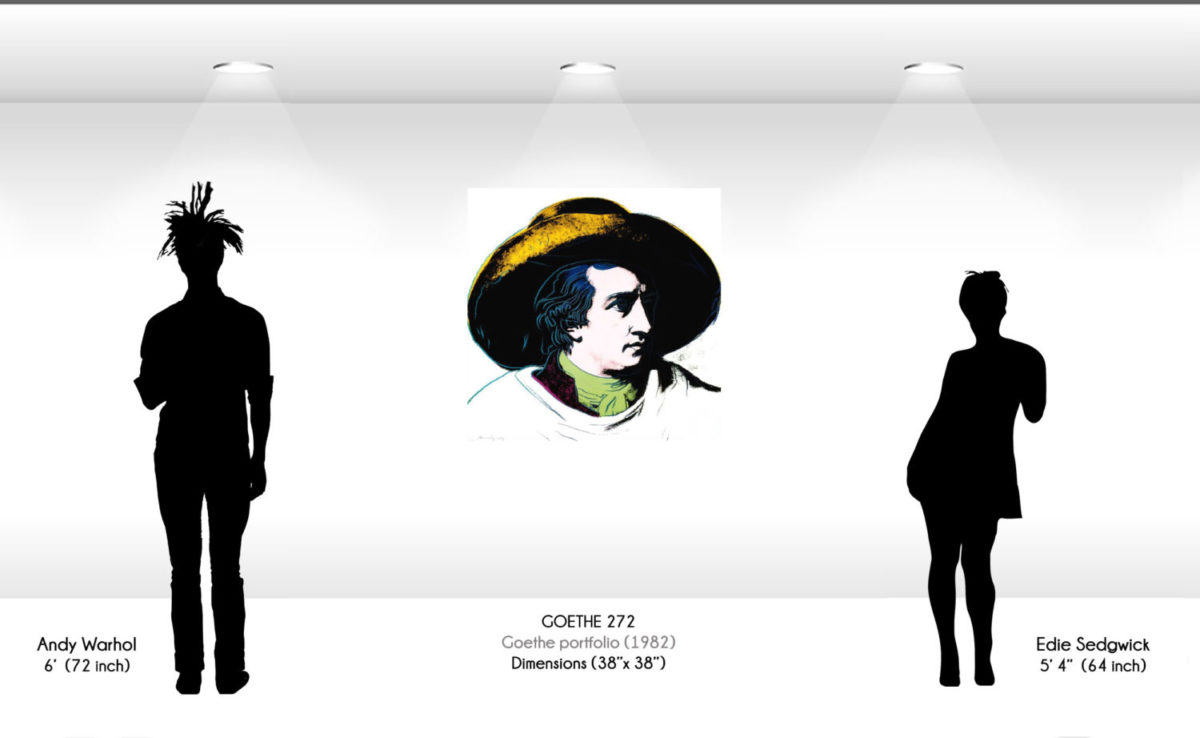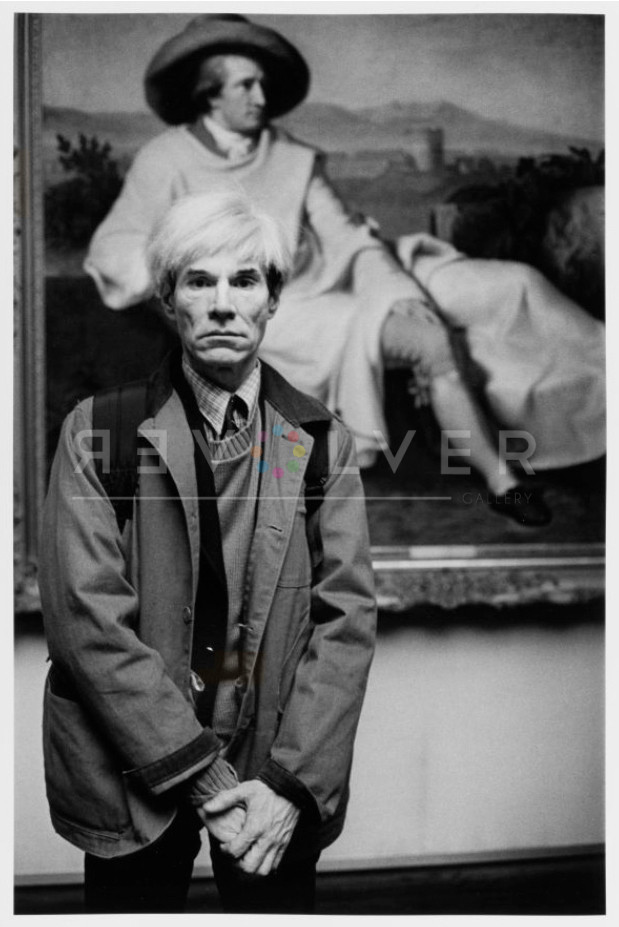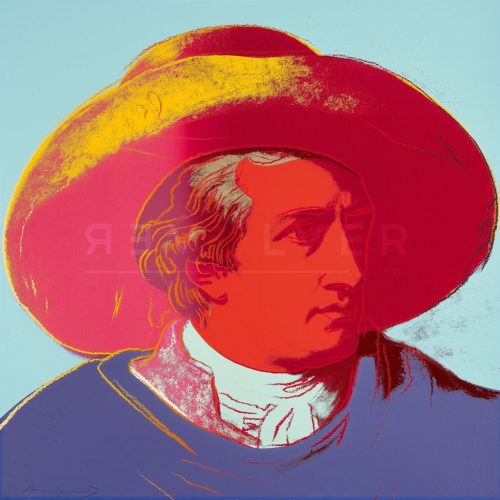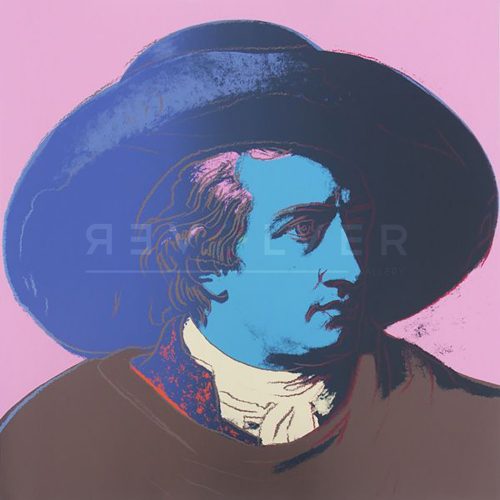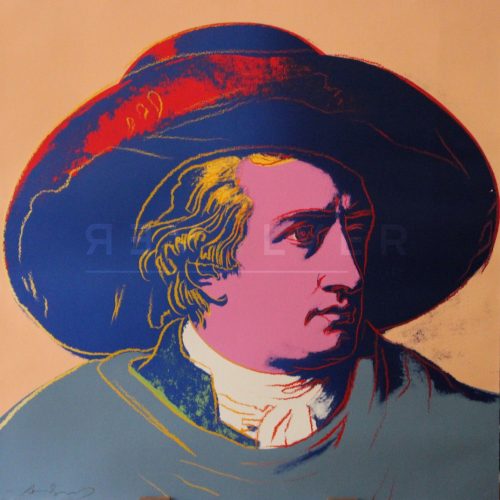Goethe 272 by Andy Warhol is a screenprint of massively influential artist and statesman, Johan Wolfgang von Goethe, from Warhol’s Geothe portfolio. Warhol completed in 1982, adapted from a famous painting by Goethe’s friend and traveling companion, Johann Heinrich Wilhelm Tischbein. The Goethe complete portfolio is characterized by bold, vivid, and highly contrasting color choices, typical of Warhol’s later portrait work. One only has to look at his series, Ten Portraits of Jews of the Twentieth Century, from two years prior to see the kind of color work Warhol was interested in at the time. However, unlike the Ten Portraits, the Goethe series presents its colors not in blocky, angular sections, but more seamlessly into the subject.
Goethe 272 is an anomaly in the greater portfolio. Instead of brave applications of near-fluorescent pinks, blues, and reds, we get something more conventional, something much closer to the source material than the other prints in the series. The print is strikingly white, indulging in its negative space. Both background and Goethe’s duster have been recessed, allowing for the centering of the other colors present. A tricolor band of yellow, flesh tone, and light pastel green draw the eye to Goethe’s face, enclosed by his cravat and large hat. The colors seem plausible, fairly ordinary even without seeing the painting it pays homage to. The star of the piece may nevertheless be the dark shadows playing across and under Goethe’s hat. Unadorned, they provide a satisfying balance to the dominant white, almost making enough of a monochrome statement to make the piece somewhat minimalist.
In that regard, it could be seen as a preface to Warhol’s Love complete portfolio from the following year, 1983. While that work isn’t strictly monochromatic or contains much black, its use of white space and interest in shadows seems very akin to the ethos of Goethe 272. Ultimately, the strong contrast and sketched lines in the Goethe portfolio make it a primary testament to Warhol’s developing techniques in the 1980s, the last decade of his life.
Photo credit: Portrait of Andy Warhol at the Städelmuseum in Frankfurt posing with Johann Tischbein’s Goethe in the Roman Campagna 1786-87.” Photo by Barbara Klemm, 1981.

